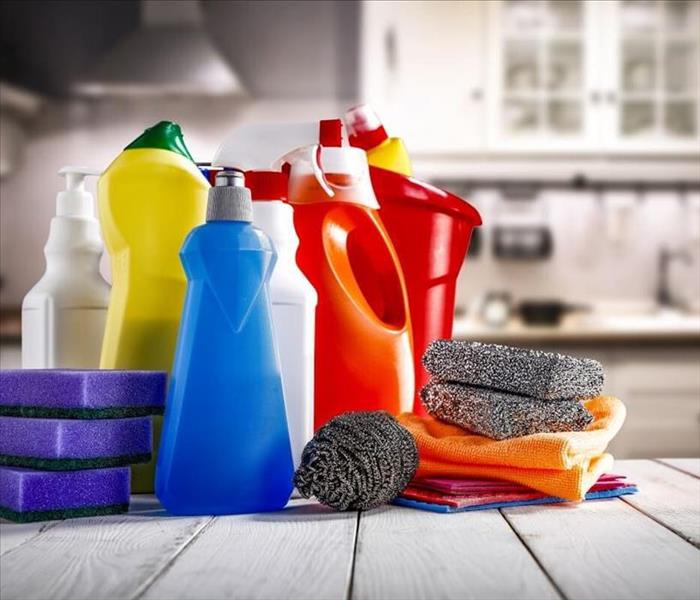Hard Water Doesn't Have to be Hard to Remove
7/25/2022 (Permalink)
It can be difficult to get rid of nasty hard water stains on windows, even for professional cleaning companies. Over 85% of United States residents and businesses reside in hard water areas. Large offices or warehouses with multiple windows are among some of the most difficult tasks to handle. The first step begins with understanding hard water and how it affects the buildings so our cleaning technicians choose the best solutions to get rid of it.
There are no minerals in the rainwater that falls to the Earth. When it passes through the ground it absorbs minerals such as calcium and magnesium. This is what transforms it from “soft water” into “hard water.” Hard water doesn't usually cause any problems with our health but it can be detrimental to plumbing, fixtures, appliances, glass, showers, or pretty much anywhere water is used.
The minerals are left behind once water is evaporated. These ugly deposits cause crusty scale, stains, film, and mineral rings. This build-up can become problematic or permanent if not dealt with quickly.
Hard Water Cleaning Solutions for Removing Those Ugly Stains:
Cleaning companies have many different methods for removing hard water stains. Acidic and non-acidic chemicals, abrasive, natural or manufactured tools, there is a multitude of cleaners that have the ability to remove mineral deposits and scale. To ensure you choose the right cleaning product for the job, surface or fixture you plan on cleaning check the manufacturer's label. You can also test the cleaner in a discreet place first if you are not sure what the outcome will be. The last thing you want to do is cause damage to your customers' building.
The more common method for removing mineral deposits such as calcium, magnesium, and iron is using an acidic product. Most hard water staining can be removed with a combination of the right cleaner, cleaning tool and a little hard work.
Cleaning tools such as white scrubbing pads, scrub brushes, and steel wool, are the usual products to get the job done. Just remember that none of these tools should be used alone, as they can permanently scratch the surface of the window. Only use these tools when the surface of the window is wet with water or cleaning chemical.
Starting your cleaning process with less harmful chemicals, tools, and methods are recommended. Then step it up to more aggressive methods should the issue persist. It may take several attempts to remove stubborn deposits.
Beware of strong acidic chemicals as they are very corrosive and damaging to certain surfaces such as stainless steel and chrome. These tools will “eat” through surfaces, so never attempt to use such chemicals without the proper training and testing.






 24/7 Emergency Service
24/7 Emergency Service
